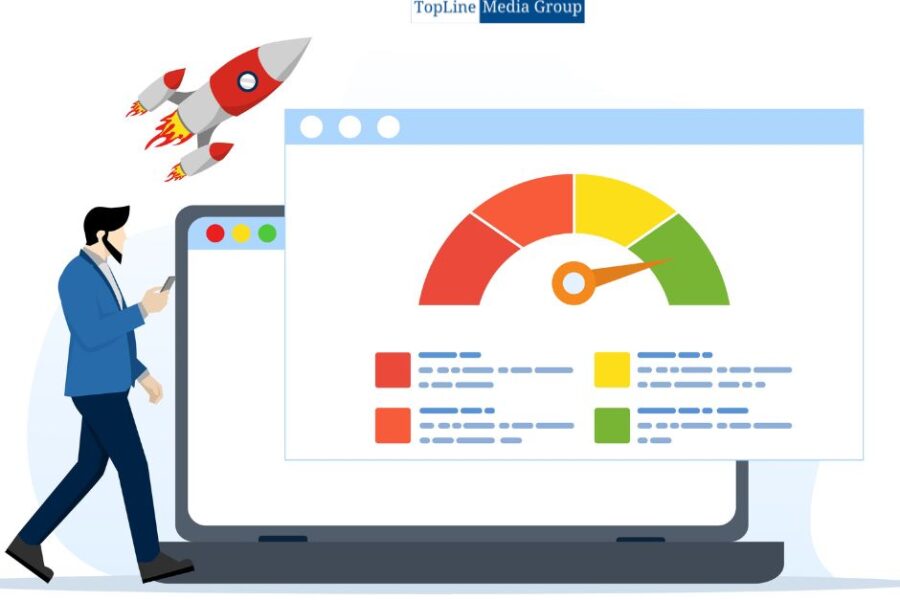With the fast online world that prevails today, the differentiation of success or failure at your website stems from speed optimization.
The quickest way to get answers from the web is by what users demand, and any little delay will affect both user experience and rankings in search engines regarding conversion rates and overall brand perception.
This is how your website risks losing valuable traffic and revenue when it does not exceed their expectations.
Importance of Website Speed Optimization
In this comprehensive blog, we will explore why website speed optimization is essential for digital marketing success and affects user experience, mobile responsiveness, SEO, and even e-commerce revenue.
Besides focusing on the tools, best practices, and technologies that may help improve website speed, this article will also be essential to get insights into how web page speed can influence user experience.
There is no question that the longer it takes a website to load, the worse the user experience.
Users have little patience with slow-loading sites, but studies confirm that any site taking more than 3 seconds to load can send nearly half its visitors away.
Imagine how this affects engagement, bounce rates, and the chances of users returning to your site.
Loading should be quick for visitors to navigate easily within your content.
It will always enhance engagement and interaction.
Websites become fast to ensure an improved visit experience with a higher possibility of digging deeper into your content, making the purchase, or even returning to your website.
Hence, optimization in website speed is an imperative part of UX design that can impact digital marketing efforts.
How Does Website Speed Influence SEO Rankings?
Website speed is no longer just a factor in satisfactory means for the end-user but has also become one of the most vital ranking factors of search engine optimization.
According to Google, its algorithms are so biased towards user experience that since 2010, page load speed has been considered one of the criteria for ranking.
Sites with faster loading times will rank higher in the search results, making them easily found by users.
Because if a page loads in less than 2 seconds, then 47% of the consumers believe it is done within a sensible loading time.
Websites that load well enjoy higher organic traffic; visibility and business growth thrive.
It can include website speed in your SEO strategy to significantly boost your ranking.
Better rankings and increased traffic can also be achieved through hosting providers that optimize speed, such as Cloudways.
Website Speed Optimization for Better Conversion Rates

Your conversion rate optimization strategy is very much related to your website speed.
The faster a visitor can reach your webpage, the higher their chance to stay, engage, and convert in action by action, whether it is making a purchase or even when they sign up for some newsletter or download content.
The faster your website is, the higher the chances visitors will become customers.
Best Practices for Optimizing Website Speed:
Optimize Images: One of the most common culprits of a slow website is large image files.
Compression of images, without loss of quality, significantly decreases page load.
Reduce HTTP Requests: Every page element, whether files or JavaScript, generates an HTTP request.
Combining files to lessen the number of requests decreases load times.
Enable Browser Caching: Many website elements are stored in a browser’s cache so that when you revisit the page, they don’t have to reload, loading your page much faster.
Use a Content Delivery Network (CDN): A CDN will hold copies of your website around the globe on servers. This reduces latency and improves load times worldwide for your users.
All these activities will lead to a quick load time, low bounce rate, and high conversion.
The Role of Website Speed in Mobile Responsiveness
Within this context, the thing that most likely needs to be done is enhance the mobile responsiveness of your website given the growing surge of mobile internet usage.
Mobile users are typically much less willing than desktop users to wait for websites to load.
According to Google, 53% of mobile users will abandon a site if it takes more than 3 seconds to load.
Next comes website speed.
Mobile optimization involves the hand-in-glove speed relationship.
Mobile Speed Optimization Techniques:
- AMP (Accelerated Mobile Pages): A project initiated by Google to enhance page load times on mobile by stripping down the HTML and CSS to provide only the essential content.
- Mobile-first Indexing: Google now considers the mobile version of a website when ranking, so it is essential to have a fast, responsive mobile site.
- Responsive Images: Using “srcset” allows you to serve smaller and more efficient image sizes to mobile users without losing quality.
Improving your website’s speed on mobile is no longer optional—it’s essential for maintaining competitiveness in the mobile-first world.
Brand Reputation and Website Speed
While your website’s speed may affect the user’s experience and conversion, this has a far bigger consequence in how users perceive your brand.
A slow-performing site creates the wrong impression about your business and instills feelings of unreliability or unprofessionalism.
A fast-loading website is the opposite, speaking well of your brand.
It says you know the latest technology developments, are concerned with customers, and are professional.
Thus, maintaining a good reputation online will require you to focus on website speed.
Tactics to Prevent Brand Damage Due to Poor Speed:
- Monitoring Speed: Tools like New Relic and GTmetrix can monitor your website’s speed regularly and identify performance bottlenecks.
- Optimize Server Performance: Using high-performance servers from hosting providers like Cloudways can boost speed.
- Test and Optimize Continuously: Speed optimization is not a one-time process. Continual A/B testing will keep your website at the top.
Prioritizing speed will enhance trust and credibility among your audiences.
Effects on E-commerce and Revenue
For e-commerce businesses, website speed is directly linked to revenue.
Due to slow loading, sales decrease, cart abandonment rates increase, and overall customer satisfaction decreases.
On the other hand, fast-loading sites boost high-conversion rates and, therefore, maximize chances for revenue.
According to Google, this translates to high conversion rates for e-commerce sites that load within 2 seconds.
Improving your website speed leads to lower bounce rates, reduces friction in the buying process, and ultimately drives more sales.
Pro Tools to Speed Up Your Website
For your website to be optimized for speed, you need the correct tools.
Here are some of the most popular tools for website speed optimization:
- Google PageSpeed Insights: Provides detailed reports about the speed of your website, along with both mobile and desktop versions.
- GTmetrix: Conducts an in-depth speed analysis comprising metrics such as total load time and the number of HTTP requests.
- Pingdom Tools: Tests your speed with visitors from around the globe and reveals where bottlenecks occur.
These tools provide insights that are essential for fine-tuning your website’s performance.
Cloudways: The Ultimate Solution for Improved Website Performance
The cloud hosting platform Cloudways has built its solutions around improving website speed.
Users can choose leading cloud providers like AWS, Google Cloud, and DigitalOcean, which enables geographically closer servers to reduce latency.
The platform also integrates advanced caching mechanisms, Nginx, and server technologies, as well as CDNs, to improve website speed.
Cloudways offers a comprehensive solution for businesses aiming to boost site speed.
Emerging Trends and Technologies
The future of website speed optimization looks bright with new technologies emerging regularly.
Trends to Watch:
- Edge Computing: Processing data at the edge reduces latency and improves loading times.
- AI-Assisted Speed Optimization: Machine learning can detect potential problems and propose automatic optimizations.
- 5G Networks: As 5G becomes widespread, fast-loading websites will be more critical than ever.
Conclusion
Website speed optimization plays an essential role in unlocking digital marketing success.
A faster website results in a better user experience, improved search engine rankings, higher conversions, and a stronger brand reputation.
Optimizing your site’s speed across all devices is crucial to maintaining competitiveness in today’s rapidly evolving digital landscape.
By employing best practices like image optimization, caching, and using CDNs, platforms like Cloudways can help you achieve the desired results.
FAQ
What does website speed optimization mean?
Website speed optimization refers to the process or action taken to improve load time and website performance so that users can experience a fast and flawless experience.
Why do you think site speed matters for SEO?
Because Google puts website speed into ranking considerations, faster websites may rank better in search results, leading to higher organic traffic.
How can I make my mobile website faster?
AMP to be used, images optimized, and mobile-first design used are reasonable solutions for improving mobile speed.
What tools could I use to test my website speed?
There are even tools for evaluating, checking, and comparing websites, such as PageSpeed Insights by Google, GTmetrix, and Pingdom Tools. This will give you an in-depth analysis of your website’s performance, comparisons between websites, and the best suggestions for improvement.
How does website speed affect e-commerce?
Website speed has an absolute effect on conversion to the e-commerce site. A faster site reduces friction at checkout and therefore increases sales while reducing cart abandonment.



